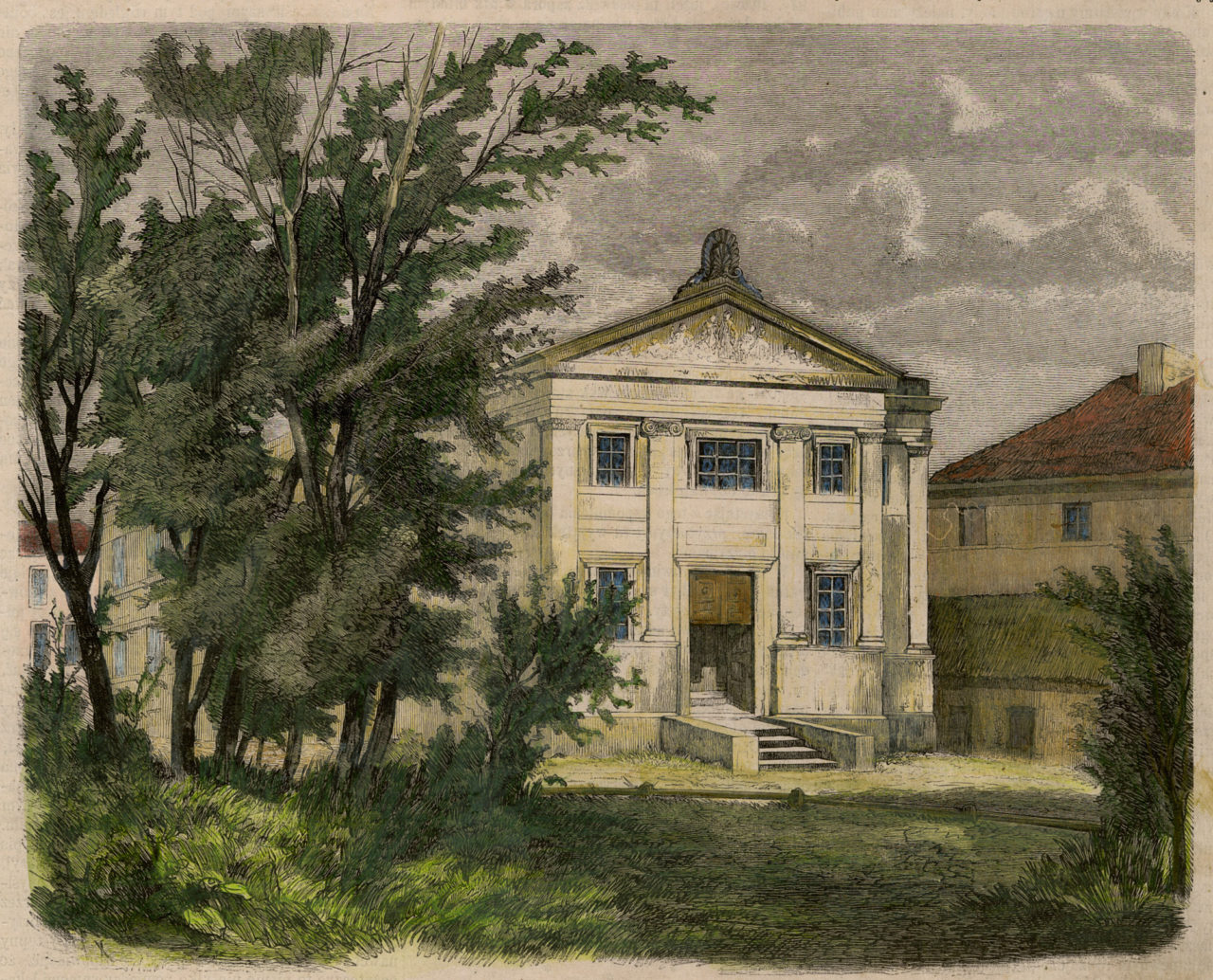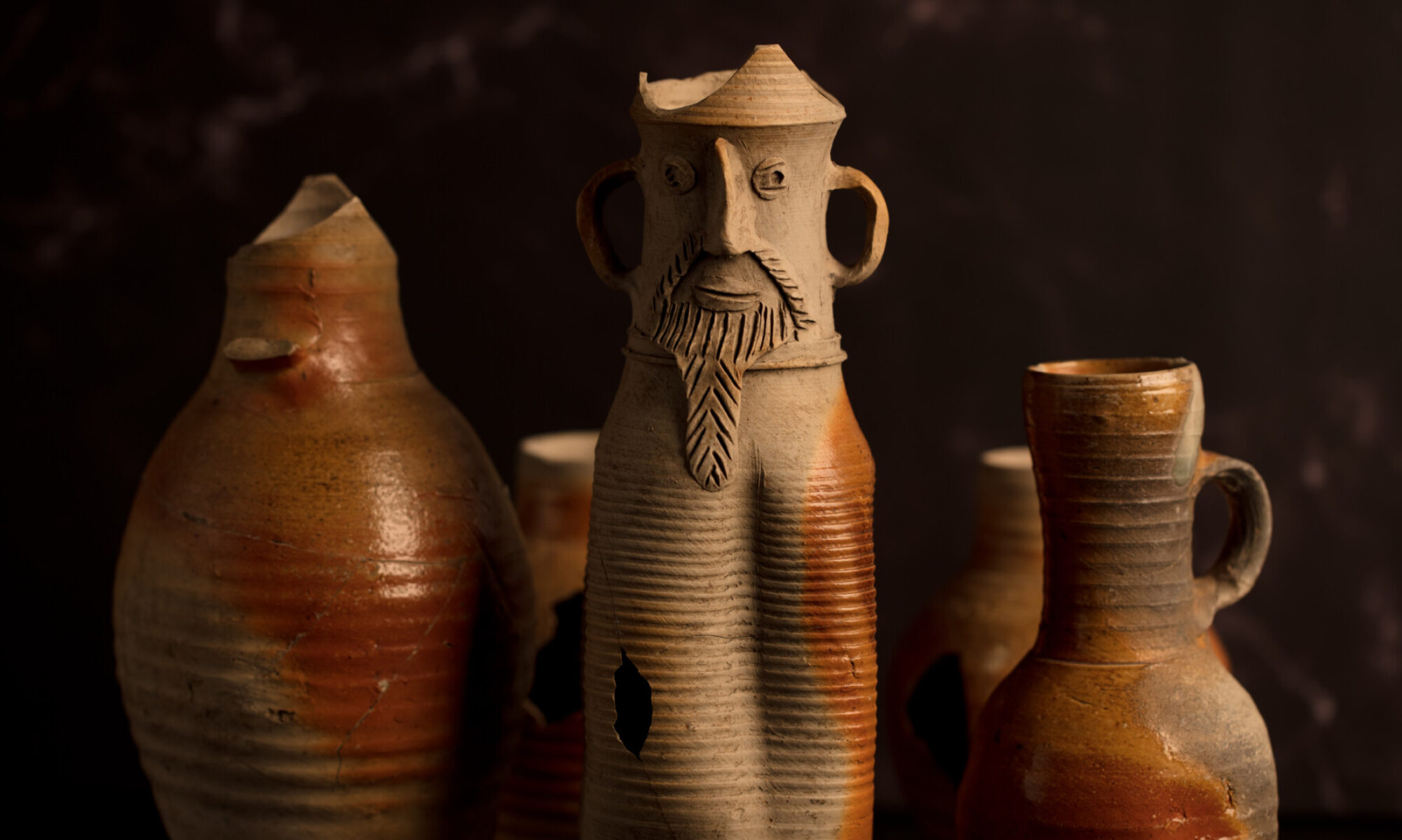The beginnings of interest in archaeology at the University of Warsaw date from the early nineteenth century, the time of the Royal University of Warsaw (1816-1831). The University’s Numismatic Cabinet was created in 1816, and Professor Feliks Bentkowski became its first curator. The first collection of the Numismatic Cabinet included a set of 2847 coins acquired in 1824; by 1862, the collection increased to 5887 coins. In response to growing antiquarian interests, a Cabinet of Ancient Curiosities was set up in 1826.

When tsarist authorities closed the University in 1831 in retaliation for the November Uprising of 1830, which hindered the development of archaeological activities. Nevertheless, shortly after the setting up in 1862 of the Main School of Warsaw, the Numismatic Cabinet and the Cabinet of Ancient Curiosities resumed activity. They continued to function even after the Main School was shut down in 1869 and replaced by a Russian Imperial University of Warsaw. In 1871, an Archaeology Cabinet was created, with c. 2000 artefacts, placed under the care of A. Mierzyński. In 1875/76 and 1881/82, Alfred Pawiński gave the first lectures on prehistory: ‘On the History and Prehistory of the Kingdom of Poland and on the History of Primitive Civilisations’. In 1877, the Numismatic and Archaeology Cabinets were merged; even so, until WWI the Imperial University had no separate chair or department of archaeology. During this period the leading role in the development of archaeology was played by the Warsaw Scientific Society, which had an Archaeology Committee starting from 1905 . Its members included Erazm Majewski, Kazimierz Stołyhwo, Stefan Krukowski, Leon Kozłowski, Ludwik Sawicki and Marian Hinner.
In 1915, tsarist authorities retreating before the advancing German army closed the Imperial University of Warsaw and most of its numismatic and archaeology collections were taken East. The University resumed work the same year, this time as a fully Polish institution.
In 1919, the Department of Prehistoric Archaeology was created and housed in Staszic Palace, and Erazm Majewski became its Director. After WWI, the collections of the Department numbered just 137 pieces from the original pre-1915 collections. After E. Majewski’s death in 1920, his successor was Professor Włodzimierz Antoniewicz. He was also the Dean of the Faculty of History in 1934/35 and Rector of the University of Warsaw in 1936/37. In 1931, the Section of Classical Archaeology was created, led by Professor Kazimierz Michałowski. During WWII, activity of the two Departments was suspended, but lectures in archaeology continued to be given as part of the Underground University.
Over the years, new chairs and departments were created (Department of Slavonic Archaeology, Department of Archaeology of Antiquity, Chair of Ancient Archaeology, with a Department of Anthropology, later transformed into the Chair of Prehistoric and Early Medieval Archaeology). After W. Antoniewicz, the Chair was headed by Zofia Wartołowska and Witold Hensel, and during the early 1960s the staff included: Zbigniew Sochacki, Bronisława Chomentowska, Maria Miśkiewicz, Andrzej Kempisty, Jerzy Gąssowski, Andrzej Wierciński, Stefan Karol Kozłowski, and Janina Rosen-Przeworska
In 1975, the Chair of Prehistoric and Early Medieval Archaeology, the Chair of Papyrology and the Chair of Mediterranean Archaeology were combined into a single unit – the Institute of Archaeology. Its first Director was Professor Waldemar Chmielewski.
The Faculty of Archaeology is the largest academic institution of its kind in Poland, one of the largest in the world. It is divided into 17 Departments and 7 Laboratories. It has a staff of c. 100 (researchers, lecturers, technicians and administration staff). The Faculty offers instruction in most branches of modern archaeology and related sciences to over 1500 students from different areas of study. At present, the Faculty of Archaeology UW is housed in the historic building of the Warsaw Main School (1862-1869) – one of the finest buildings on the main campus of the University.

